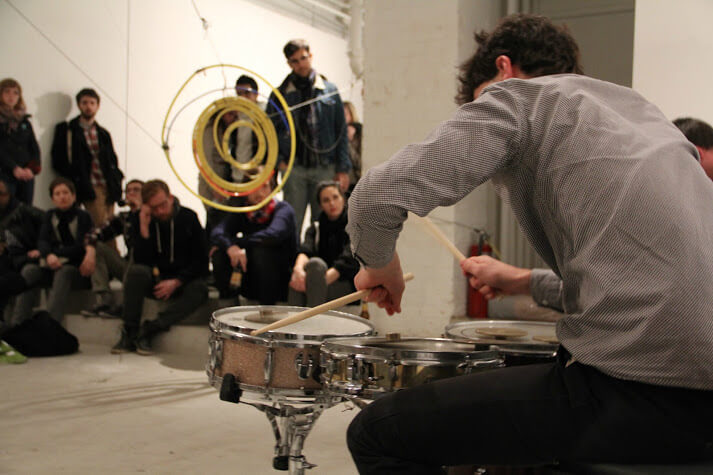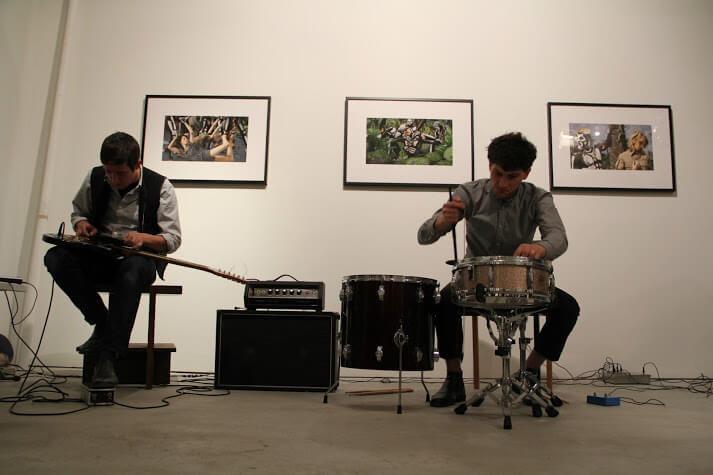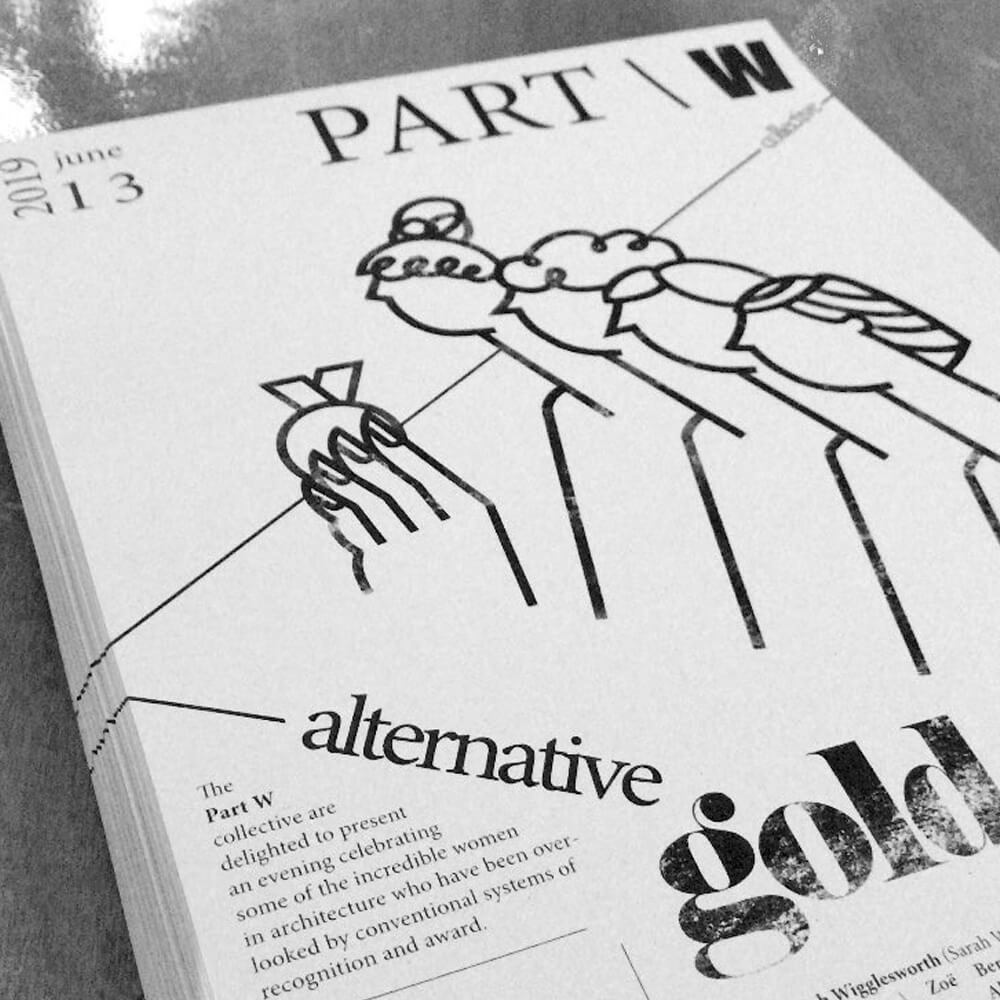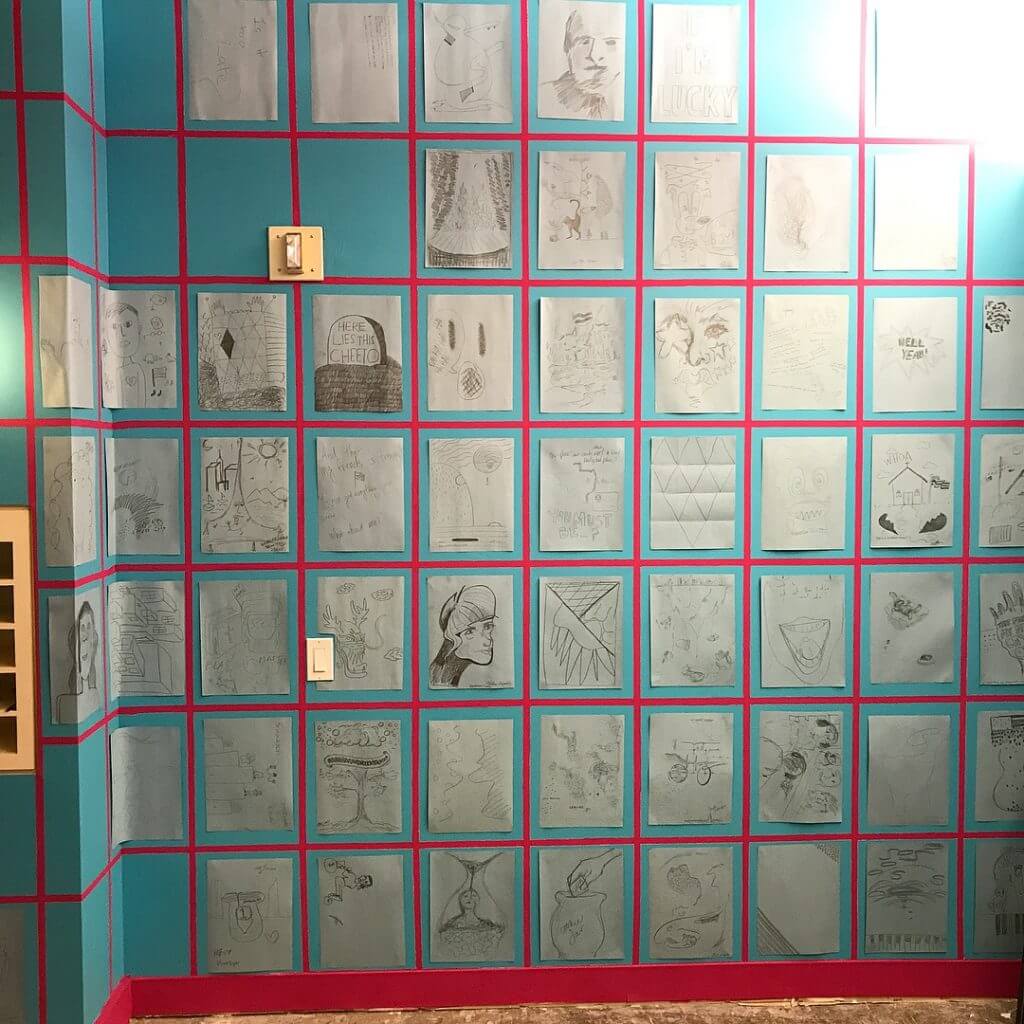Helen Homan Wu & Rebecca Heidenberg: RH Gallery Autumn Show



Rebecca Heidenberg and Helen Homan Wu
The RH Gallery Autumn show offered a unique evening of art viewing interwoven with three sound performances. The sum effect was a joint experience shared by the attendees who traveled together between each act of the night. The schedule opened with informal viewings of the visual art displayed by four different artists in the 13.0.0.0.0 show by RH. The Aschan Orchestra opened the performance series by seducing the audience into a parallel universe with their synchronized bells and video installation. Attendees then proceeded to the second level of RH for a blast of slide guitar and modern drumming by duo Eli Keszler and Geoff Mullen. The evening was rounded out by sound artist and photographer, Aki Onda, who delivered a collaged presentation of remixed drones and sounds of the city, many recorded on tape cassette.
Frontrunner caught up with curators Rebecca Heidenberg and Helen Homan Wu to learn about the history and vision of the RH Autumn Show.
Both of you are native New Yorkers who work internationally with artists from all over the world. How does this play a part in your collaboration?
HHW: I think being a native New Yorker definitely has a huge advantage working in the art world, especially as curators. When I met Rebecca, I picked up her sensibility and enthusiasm for working with international artists, particularly more early career artists. I’m not sure if this plays a huge part in our collaboration, I think it’s more about our openness to experiment and present something dynamic to both of our audiences.
RH: I agree with Helen wholeheartedly. Helen’s experimental approach to curating and widespread knowledge of artists not only in New York but around the world attracted me to the collaboration. I am always eager to learn about new artists and meeting Helen gave me an incredible opportunity to become acquainted with many new artists and approaches to art-making.


Rebecca, how do you see the Autumn Intermission performances and RH Gallery fall exhibitions, past and future, complementing one another? and vice versa?
RH: RH Gallery’s mission has always included a multidisciplinary approach to programming. Autumn Intermission was a very exciting proposal for us because it brings in time-based site-specific artists to initiate new forms of dialog with our exhibitions. On the other hand it allows the artists included in Autumn Intermission to approach their work from new perspectives in a creative environment which has been very exciting for them.


Helen, how was the Autumn Intermission developed?
HHW: I had just met Rebecca this Summer, and checked out her gallery in Tribeca. I was extremely inspired by the gallery space and architecture of the interiors, and immediately we hit it off with an idea to collaborate. It all happened really fast, actually. Rebecca had sent me the press releases to all the exhibitions that were programmed for the Fall. I spent some time with the material, and drew up a 4 part program specifically designed with the gallery and exhibitions in mind. These Intermissions are sort of a dialogue with the idea behind the exhibitions.


Rebecca, as a gallery owner and art dealer, what role do you see a performance series like this playing?
I think it’s important for galleries to inspire new perspectives. Performances allow for that kind of space. Integrating performances into our program encourages viewers to see work in new light and experience the gallery as an activated, living space.

Helen, how did you decide to organize this series into its four parts?
The unfolding of a story between multiple events adds value to the experience because there will be another act to compare to within the series. As a producer, creating a series of anything rather than one-offs is much more interesting, to the audience and to the artists involved. Theoretically, I thought of it as a score, adding “intermissions” in between a song (the exhibitions). Strategically speaking, it’s a way to engage the audience on multiple levels. Also, each event (or act) is completely different, yet as a whole it remains cohesive. This limitation sets a nice boundary but also gives us plenty of room to experiment. It’s exciting to have something to look forward to.
Rebecca, you have a strong interest in art and design, as well as experience in producing films. What role do you feel sound and performance play in all of this?
RH: I would say that sound, performance, film, visual art and design all live in the same realm for me as long as they create an experience for the viewer that is in one way or another moving. I am particularly interested in sound and performance within the gallery space because, when successful, they truly impose a very particular environment on the viewer that is inescapable. It has been incredible to see how the space completely changes with each artist that Helen has brought in so far.
Photography for this article by Michael Fasciano, Twitter: @Fasciano









Responses